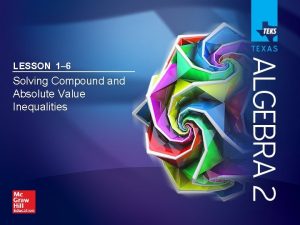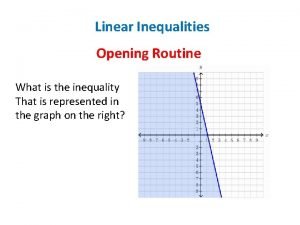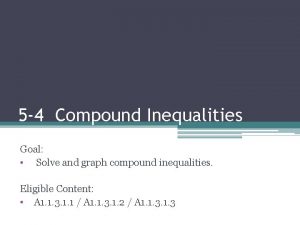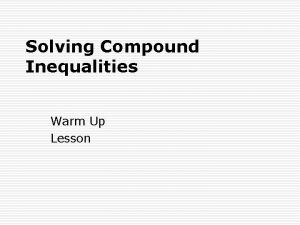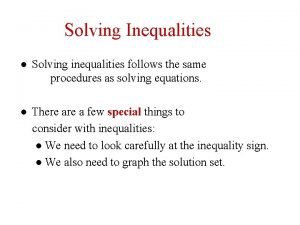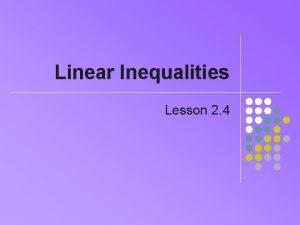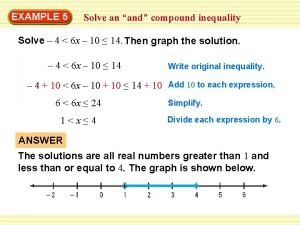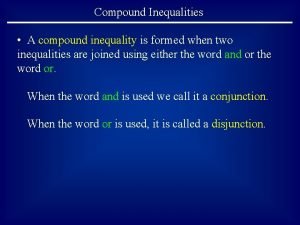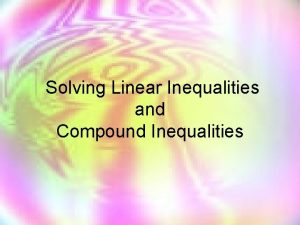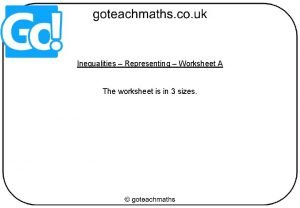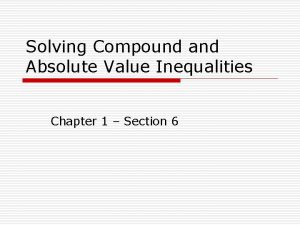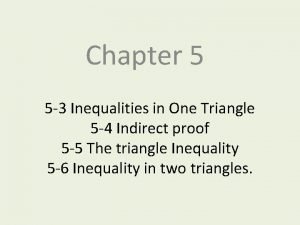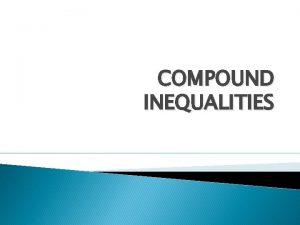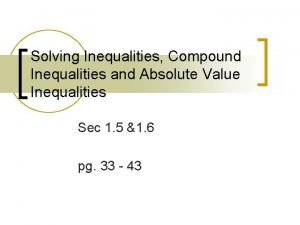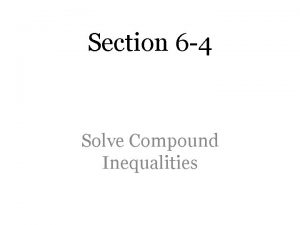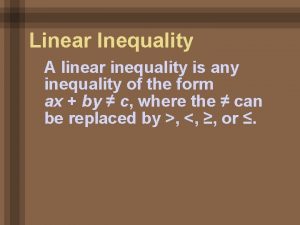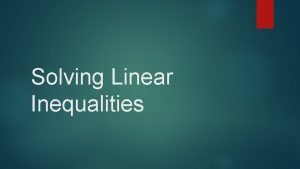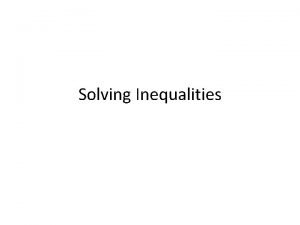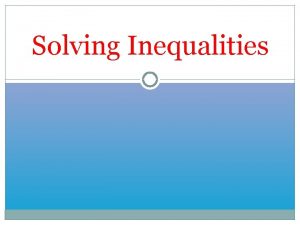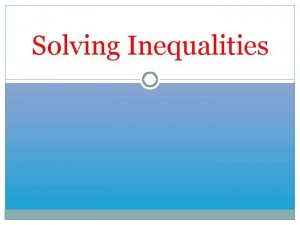Compound Inequalities A compound inequality is formed when

















- Slides: 17

Compound Inequalities • A compound inequality is formed when two inequalities are joined using either the word and or the word or. When the word and is used we call it a conjunction. When the word or is used, it is called a disjunction.

Compound Inequalities Conjunction Disjunction And Or

• Two more definitions are needed before we proceed. The intersection of two sets is the set of elements that are common to both sets. The symbol ∩ is used to represent intersection. The union of two sets is the set of elements that are in one or the other of the sets. The symbol U is used to represent union.

• Consider how two streets come together to demonstrate these concepts. Harmony Street The intersection of the two streets is the portion of pavement that is common to both. Shields Street

The union of the two streets is the portion of pavement that is on one street or the other. Harmony Street Shields Street

The union of the two streets is the portion of pavement that is on one street or the other. Harmony Street Note that this includes the intersection which is on both streets. Shields Street

When working with a conjunction, think intersection. Conjunction Disjunction And Or Intersection

When working with a disjunction, think union. Conjunction Disjunction And Or Intersection Union

• Example 1 Solve: This is a conjunction (and), so we want the intersection. Solve each of the inequalities.

We want to find the values of x that are common to both inequalities. A graph will assist in accomplishing this.


Graph the points on the line that are common to both graphs. The solution is The interval notation answer is

• Example 2 Solve: This is a disjunction (or), so we want the union. Solve each of the inequalities.

We want to find the values of x that satisfy one inequality or the other. A graph will assist in accomplishing this.


Graph the points on the line that are on one graph or the other. The solution is The interval notation answer is

 Lesson 1-6 compound inequalities
Lesson 1-6 compound inequalities Linear inequalities
Linear inequalities Solving and graphing compound inequalities worksheet
Solving and graphing compound inequalities worksheet Compound inequality solver
Compound inequality solver Compound inequalities lesson
Compound inequalities lesson Inequalities math
Inequalities math Inequality format
Inequality format Greater than less than examples
Greater than less than examples Inequality subtraction rule
Inequality subtraction rule Compound inequality and
Compound inequality and Compound inequality
Compound inequality Compound inequalities example
Compound inequalities example Equality and inequality symbols
Equality and inequality symbols In an ionic compound the bond is formed due to
In an ionic compound the bond is formed due to First organic compound which was formed in primitive ocean
First organic compound which was formed in primitive ocean Solving inequalities worksheet
Solving inequalities worksheet Solving compound absolute value inequalities
Solving compound absolute value inequalities 5-5 skills practice the triangle inequality
5-5 skills practice the triangle inequality
